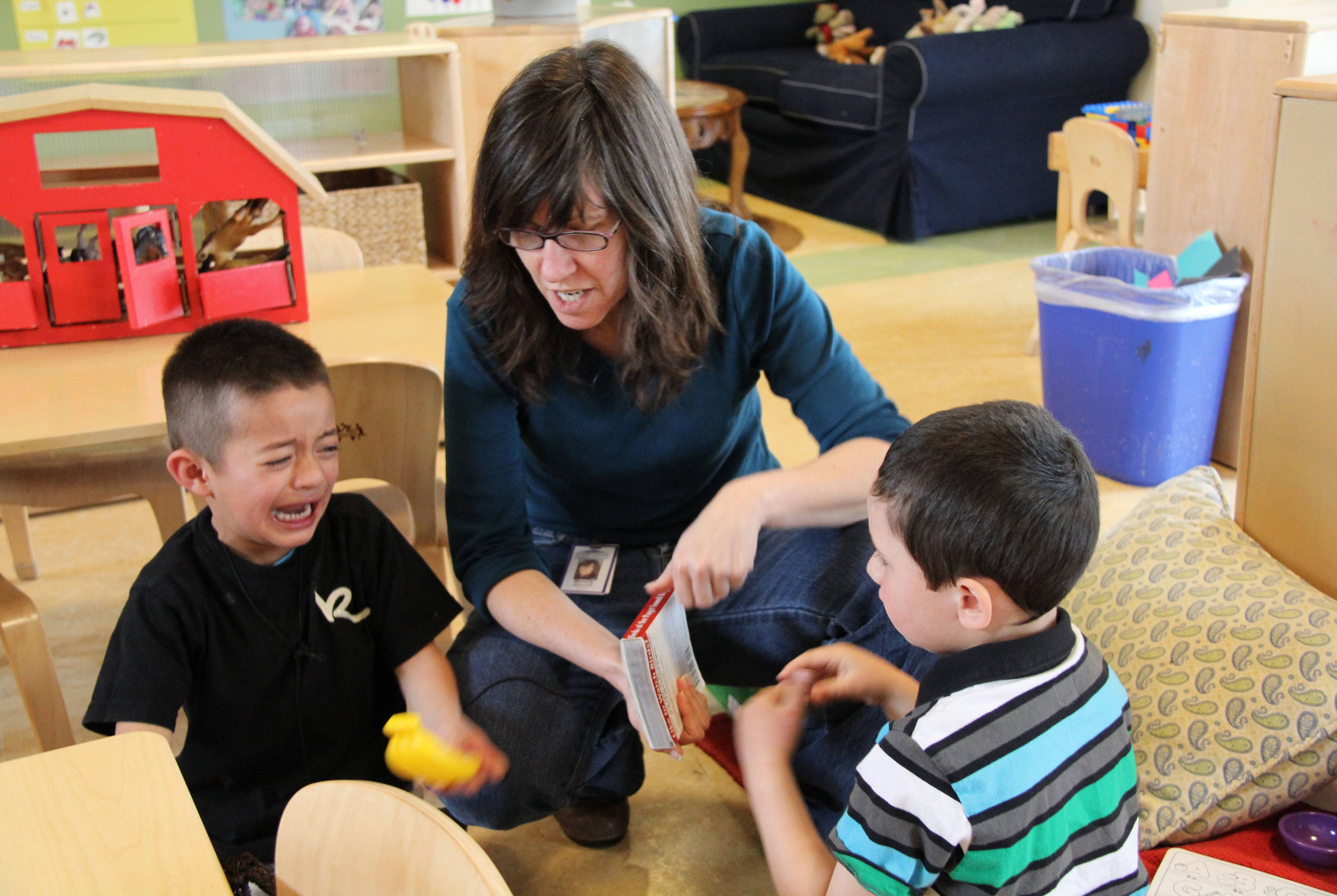 Introduction
Introduction
Young children's mental health and healthy social and emotional development benefit from the following elements:
- Positive relationships between education staff, children, and families that are respectful and supportive
- Positive environments that have been carefully arranged to promote appropriate behavior
- Positive approaches and interactions that intentionally support children's emotional and behavioral self-regulation and social and emotional development
- A research-based curriculum that supports social and emotional development and is reflected in materials, interactions, environments, and learning experiences
Additionally, some children may need more intensive support when their behavior:
- Interferes with their ability to engage in positive interactions and relationships with peers or adults
- Interferes with their ability to explore the environment and learn
- Persists despite developmentally appropriate guidance
- Causes the child's parents and family members to be concerned
ISPs are different than 504 Plans. ISPs can be developed for any infant, toddler, or preschooler who may need more intensive support related to their behavior. 504 Plans are required under Section 504 of the Rehabilitation Act of 1973. They are developed for preschool children "who have a physical or mental impairment that substantially limits one or more major life activities, have a record of such impairment, or be regarded as having such an impairment," but do not qualify for services under the Individuals with Disabilities Act (IDEA). For more information about Section 504, review Services for Children Who Do Not Qualify for IDEA: Fact Sheet.
Programs can support children who may need more intensive help by developing and using an Individual Support Plan (ISP). When determining whether a child needs an ISP, make sure to rule out developmental delays or medical concerns first. Use observation data from staff, family members, mental health consultants, and others to gather initial data as well as analyze results. Work with the family to review medical history, screening, ongoing child assessments, and the opinion of the child's primary medical provider. Also, gather information from staff and family members about the behavioral concerns and the child's environment, life experiences, and circumstances.
It is important to explore information about the child and family, not just the immediate behavior. For example, find out if there have been any significant changes in the child's life, traumatic events that happened to the child or to close family members, or other occurrences that might be affecting the child.
Strategies
Process for Developing an ISP
Individualized, intensive support or intervention involves an ongoing process. Staff, families, mental health consultants, and others participate in this process.
- Observing
- Gathering information from medical providers, staff, and families
- Reflecting
- Assessing
- Planning
- Implementing intervention methods
During the ISP process, families and professionals share information and insights about a child's life experiences and circumstances and the history of behavior to:
- Develop an individual support plan
- Consistently use individualized, agreed-upon strategies designed to help a child self-regulate and learn more appropriate behaviors
Consider using screening tools that provide additional information about social and emotional development and behaviors, such as the ASQ®:SE-2 or DECA-I/T and DECA-P2. Tools like these can assist the ISP team in identifying strategies and supports that would best help the child. They can also be used to identify environmental factors that may be influencing a child's behavior.
For more information about screening and ongoing assessment, see the following Head Start Tip Sheets for Grantee Planning:
The steps below may occur at the same time, one at a time, or repeated over time.
- Create a team to explore the behavior(s) in question, share concerns, and develop goals. Potential team members include parents and other family members, direct service staff (e.g., teachers, home visitors, family child care providers, family service workers), the mental health consultant, education managers, health care providers, and others who are concerned and knowledgeable about the child.
- Gather information and data on the child's behavior, including observations of the child in the environments where the behavior occurs. The goal is to determine the meaning behind the behavior, or the child's purpose in using the behavior. Consider the following when determining what a child's behavior means:
- Child's age and developmental stage
- Child's language and communication abilities
- Child's history, experiences, and relationships
- Family background, parenting and cultural practices, and cultural values
- Develop and implement a consistent plan or plans for all relevant environments based on a hypothesis or best guess about the meaning behind the behavior.
- Allow enough time to implement the plan(s) to notice whether the intervention is successful.
What Your Plan Should Include
- Strategies to minimize or prevent the target behavior, such as modifying the environment, routines, daily schedule, interactions, and learning experiences.
- Who, what, when, where, and how the plan will be implemented so adults use consistent strategies and responses with the child; for example:
- How each person who interacts with the child will respond to the behavior
- Procedures for teaching new skills to replace the target behavior
- Responses to determine what adults should do when the target behavior occurs to ensure it is not maintained and the new skill is learned
- A description of staff and family supports needed to implement the plan.
- A timeframe and method for evaluating changes in the target behavior.
- A schedule of dates for staff and family to meet regularly to evaluate progress and revise the plan as needed.
Head Start Program Performance Standards
 Child screening and assessments, 45 CFR §1302.33
Child screening and assessments, 45 CFR §1302.33
(a) Screening
(b) Assessment for individualization
(c) Characteristics of screenings and assessments
Child mental health services and emotional well-being, 45 CFR §1302.45
(a) Wellness promotion
(b) Mental health consultants
Family support services for health, nutrition, and mental health, 45 CFR §1302.46
(b)(1)(iv) Opportunities to discuss with staff and identify issues related to child mental health and social and emotional well-being
Resources
Preschool
Dual Language Learners with Challenging Behaviors
Birth to 5
Head Start Tip Sheet for Grantee Planning: Understanding and Managing Children's Behaviors
National Center for Pyramid Model Innovations (NCPMI)
- Behavior Intervention and Positive Behavior Support
- Center on the Social and Emotional Foundations for Early Learning (CSEFEL) Training Modules
- Promoting Social and Emotional Competence of Infants and Toddlers
- Promoting Social and Emotional Competence in the Preschool Classroom
- Parent Training Modules: Positive Solutions for Parents (Preschool)
- Parents Interacting with Infants and Toddlers (PIWI)
Preventing and Addressing Challenging Behaviors: We Are All in This Together
Strategies for Understanding and Managing Young Children's Behavior: What Is Developmentally Appropriate—and What Is a Concern? Technical Assistance Paper No. 10
« Go to Head Start Tip Sheets for Grantee Planning
Read more:
Resource Type: Article
National Centers: Early Childhood Development, Teaching and Learning
Last Updated: October 4, 2020
